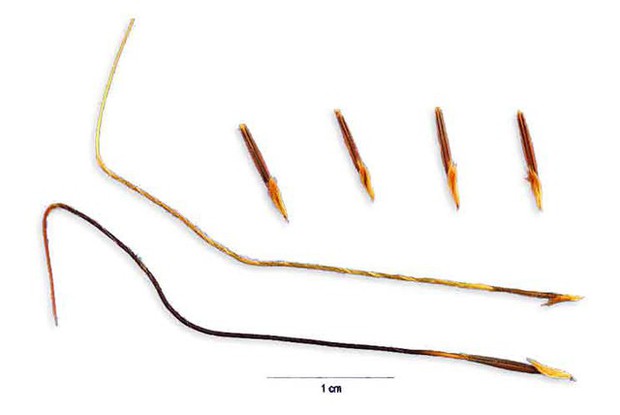Many people say that this type of grass is closely connected to their childhood memories.
On social media platforms, numerous users are curious about an object that looks like hair strands but has the ability to move. In fact, this is the seed of a certain type of grass.
Pili grass, scientifically known as Heteropogon contortus, is a unique ornamental plant belonging to the Poaceae family. This grass species adapts well to various climatic conditions, ranging from dry to humid, found in regions such as South Africa, South Asia, North Australia, the Pacific Islands, and Southwestern North America.
Pili grass is a herbaceous plant that can grow up to 1.5 meters tall. Its leaves and leaflets grow along the midrib and range from 5 to 30 centimeters in length. The seed heads grow individually or in pairs in the upper leaf axils.
The name “Pili” in the native Hawaiian language means “to adhere tightly” or “cling to.” This name reflects how the seeds of this grass are dispersed in nature, relying on wind or animal interaction.
The distinctively dark-colored Pili grass seeds have elongated tapered tips. Its appearance often reminds many people of human hair strands. Moreover, these seeds exhibit a peculiar “ability” to move when exposed to moisture. Pili grass seeds contract and bend continuously, creating movement. Essentially, this is a survival mechanism, enabling the seeds to wiggle into small cracks or crevices in dry soil, aiding their propagation.

Regarding its utility, in some places, people cultivate Pili grass for ornamental purposes or as fodder for livestock. Clumps of Pili grass also serve as effective soil erosion control. Native Hawaiians also use Pili grass for thatching roofs.
However, Pili grass poses a concern in the wool industry in various Australian regions, as the seeds stick to wool and can penetrate the skin, reducing the value of wool and, in severe cases, causing the death of sheep.
There have been documented instances worldwide where Pili grass seeds burrowed deep into the bodies of animals through open wounds, causing immense pain and subsequent fatalities.
Presently, this type of grass continues to attract attention due to its “unique and unusual” nature.












